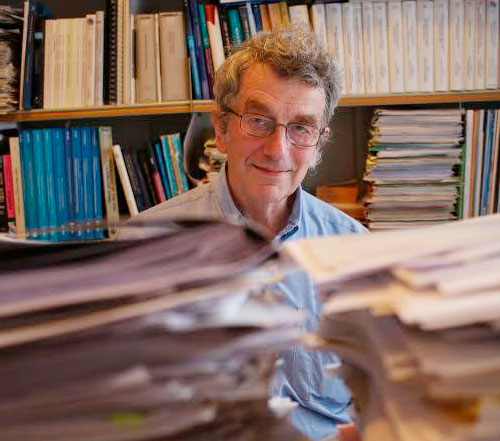A journey toward alien stars and planets
At the end of June, our DNRF Center for Stellar Astrophysics (SAC) will close after ten years of groundbreaking research in astrophysics. The head of SAC, Professor Jørgen Christensen-Dalsgaard, strongly believes that the support from the DNRF has played a major role in the notable position he and his colleagues have achieved in this area.

Professor Jørgen Christensen-Dalsgaard is a pioneer in asteroseismology (measurement of seismic waves from stars), and he has devoted his life to exploring planetary systems and stars outside our solar system using stellar quacks, which are vibrations on the surfaces of stars. By measuring the vibrations, one can find out the age of a star, its mass and radius, and how it rotates.
“We can use this knowledge, for example, to investigate how planetary systems are formed and how they evolve. We also have a fruitful collaboration with astrobiologists and researchers from geoscience on what can indicate life and what it takes to create life on other planets,” Christensen-Dalsgaard explained.
First Danish recipient of the Kavli Prize
Christensen-Dalsgaard has been given numerous awards and honors. Recently, he became a member of the National Academy of Sciences, and this month he will be the first Dane to receive the Norwegian Kavli Prize.
The prize has also been awarded to two other important researchers, Conny Aerts and Roger Ulrich, who also work with helio- and asteroseismology.
When asked why he believes the Kavli Prize has focused on his research, Christensen-Dalsgaard explained: “Together, we represent a field that has demonstrated its value and breadth. We have reached a point where it deserves to be recognized for its achievements and for the enormous effort that goes into organizing research in this field.”
He added: “But many more people have played an important role, not least all those who have developed the incredibly precise and sensitive technology we use.”
Many years of DNRF support created a strong research environment
When Christensen-Dalsgaard closes the door to SAC, he can look back on 40 years of research that he has built from scratch. And by his own admission, his success is due to the fact that he has had the opportunity to build an expertise and train a research group not only at SAC, but also at the DNRF’s Theoretical Astrophysics Center (TAC), with which he was affiliated from 1994 to 2004. In addition, he has also created an interdisciplinary research collaboration, which opens up an exciting future for research into exoplanets.
“I enjoy the close contact I have had with researchers and students, and I have always emphasized involving people instead of competing. Other researchers outside my center, for example, have had access to our data.”
Christensen-Dalsgaard continues his career as professor emeritus and plans to carry out his daily work at the department at Aarhus University.
“I want to immerse myself in my personal research about how stars are built. And then I want to inspire younger researchers – and maybe travel some more,” he concluded.
